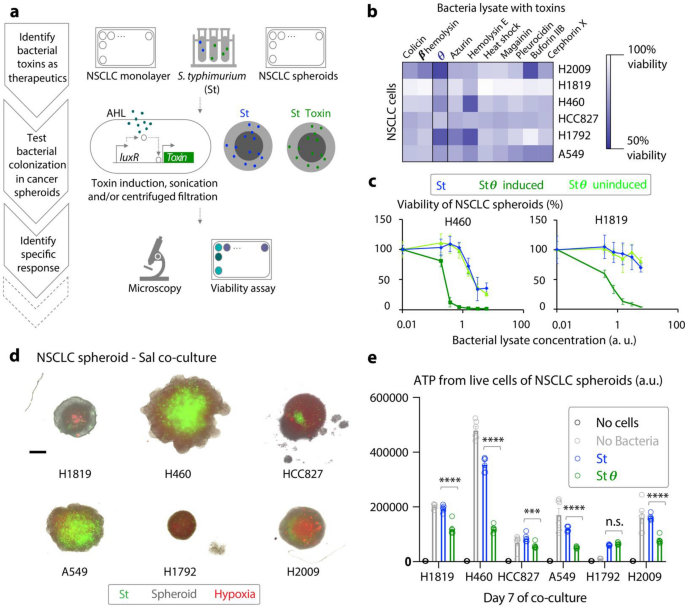ゲノムの機能を知る手がかりを発見 Discovery Offers Insights into the Genome’s Functionality
2022-12-19 ニューヨーク大学 (NYU)
ニューヨーク大学物理学科の准教授で、『フィジカルレビューX』誌に掲載されたこの論文の著者であるアレクサンドラ・ジドフスカ氏は、「ゲノムは核の中でどのように編成されているかによって、その生体機能に直接影響を与えますが、この編成を支える物理原理はまだ解明されていません」と説明しています。”我々の結果は、細胞核内のゲノムの組織の生物物理学的起源に対する基本的な洞察を提供しています。”
具体的には、細胞核で働く酵素が、染色体材料(クロマチン)に加える力を調べた。この力は、転写などのプロセスを開始し、クロマチンの空間的配置に影響を与えるように作用する。
このクロマチン配列が生物学的機能に影響を与えるのです。しかし、遺伝情報の伝達という重要な役割を担っているにもかかわらず、その物理的な仕組みは不明なままです。
研究チームは、ゲノムを構成する主要な部分であるユークロマチンとヘテロクロマチンに着目し、このダイナミクスの解明を目指した。ユークロマチンには活発に転写されている遺伝子が多く含まれ、これが発現を促進する。一方、ヘテロクロマチンには、細胞内で沈黙している(つまり発現しない)遺伝子が含まれる。
研究チームは、この過程を再現するコンピュータモデリングシステムを開発し、何度もシミュレーションを繰り返した。モデル核では、ヒトゲノムの染色体数に相当する23本のクロマチン線維をペラペラの鎖としてモデル化し、液体を満たした球体の中に詰め込んだ。各鎖は、活動的な領域(ユークロマチン)と受動的な領域(ヘテロクロマチン)に分割された。
研究グループは、クロマチン線維に活性な力が働くと、その周囲の流体に流れが生じ、それが周囲のクロマチンの運動や位置決定に影響を与えることを見出した。これらの力は、真性染色体部分を押し、ゲノムの大きな空間的再配置を引き起こす流れを駆動し、特にヘテロクロマチンコンパートメントの形成につながることがわかった。
<関連情報>
- https://www.nyu.edu/about/news-publications/news/2022/december/stresses-and-hydrodynamics-scientists-uncover-new-organizing-
- https://journals.aps.org/prx/abstract/10.1103/PhysRevX.12.041033
細胞核におけるヘテロクロマチンの分離と圧縮を促進するユークロマチン活性 Euchromatin Activity Enhances Segregation and Compaction of Heterochromatin in the Cell Nucleus
Achal Mahajan, Wen Yan, Alexandra Zidovska, David Saintillan, and Michael J. Shelley
Physical Review X Published 23 December 2022
DOI:https://doi.org/10.1103/PhysRevX.12.041033
ABSTRACT
The large-scale organization of the genome inside the cell nucleus is critical for the cell’s function. Chromatin—the functional form of DNA in cells—serves as a template for active nuclear processes such as transcription, replication, and DNA repair. Chromatin’s spatial organization directly affects its accessibility by ATP-powered enzymes, e.g., RNA polymerase II in the case of transcription. In differentiated cells, chromatin is spatially segregated into compartments—euchromatin and heterochromatin—the former being largely transcriptionally active and loosely packed, the latter containing mostly silent genes and densely compacted. The euchromatin-heterochromatin segregation is crucial for proper genomic function, yet the physical principles behind it are far from understood. Here, we model the nucleus as filled with hydrodynamically interacting active Zimm chains—chromosomes—and investigate how large heterochromatic regions form and segregate from euchromatin through their complex interactions. Each chromosome presents a block copolymer composed of heterochromatic blocks, capable of cross-linking that increases chromatin’s local compaction, and euchromatic blocks, subjected to stochastic force dipoles that capture the microscopic stresses exerted by nuclear ATPases. These active stresses lead to a dynamic self-organization of the genome, with its coherent motions driving some mixing of chromosome territories as well as large-scale heterochromatic segregation through cross-linking of distant genomic regions. We study the stresses and flows that arise in the nucleus during the heterochromatic segregation and identify their signatures in Hi-C proximity maps. Our results reveal the fundamental role of active mechanical processes and hydrodynamic interactions in the kinetics of chromatin compartmentalization and in the emergent large-scale organization of the nucleus.


